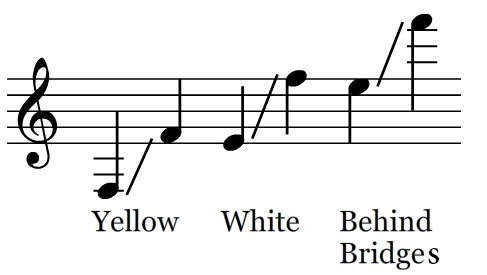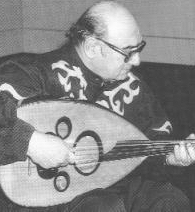|
Maqam Al-Iraqi
Iraqi Maqam ( ar, المقام العراقي) is a genre of Arabic maqam music found in Iraq. The roots of modern Iraqi maqam can be traced as far back as the Abbasid Caliphate, when that large empire was controlled from Baghdad. The ensemble of instruments used in this genre, called ''Al Chalghi al Baghdadi'', includes a ''qari' '' (singer), ''santur'', goblet drum, joza, ''cello,'' and sometimes ''oud'' and naqqarat. The focus is on the poem sung in classical Arabic or an Iraqi dialect (then called ''zuhayri''). A complete maqam concert is known as ''fasl'' (plural ''fusul'') and is named after the first maqam: Bayat, Hijaz, Rast, Nawa, or Husayni. A typical performance includes the following sections: *''tahrir'', sometimes ''badwah'' *''taslum'' *''finalis'' Maqama texts are often derived from classical Arabic poetry, such as by al-Mutanabbi, Jawahiri, al-Mutanabbi and Abu Nuwas. Some performers used traditional sources translated into the dialect of Baghdad, and still o ... [...More Info...] [...Related Items...] OR: [Wikipedia] [Google] [Baidu] |
Musical Genre
A music genre is a conventional category that identifies some pieces of music as belonging to a shared tradition or set of conventions. It is to be distinguished from ''musical form'' and musical style, although in practice these terms are sometimes used interchangeably. Music can be divided into genres in varying ways, such as popular music and art music, or religious music and secular music. The artistic nature of music means that these classifications are often subjective and controversial, and some genres may overlap. Definitions In 1965, Douglass M. Green distinguishes between genre and form in his book ''Form in Tonal Music''. He lists madrigal, motet, canzona, ricercar, and dance as examples of genres from the Renaissance period. To further clarify the meaning of ''genre'', Green writes "Beethoven's Op. 61" and "Mendelssohn's Op. 64 ". He explains that both are identical in genre and are violin concertos that have different form. However, Mozart's Rondo for Piano, K. 511 ... [...More Info...] [...Related Items...] OR: [Wikipedia] [Google] [Baidu] |
Santur
The santur (also ''santūr'', ''santour'', ''santoor'') ( fa, سنتور), is a hammered dulcimer of Iranian origins.--- Rashid, Subhi Anwar (1989). ''Al-ʼĀlāt al-musīqīyya al-muṣāhiba lil-Maqām al-ʻIrāqī''. Baghdad: Matbaʻat al-ʻUmmāl al-Markazīyya. History The santur was invented and developed in the area of Iran and Mesopotamia. "The earliest sign of it comes from Assyrian and Babylonian stone carvings (669 B.C.); it shows the instrument being played while hanging from the player's neck" (35). This instrument was traded and traveled to different parts of the Middle East. Each country customized and designed its own versions to adapt to their musical scales and tunings. The original santur was made with wood and stones and strung with goat intestines. The Mesopotamian santur has been claimed to be the father of the harp, the Chinese yangqin, the harpsichord, the qanun, the cimbalom, and the American and European hammered dulcimers. Name The name 'santur' co ... [...More Info...] [...Related Items...] OR: [Wikipedia] [Google] [Baidu] |
Arabic Music
Arabic music or Arab music ( ar, الموسيقى العربية, al-mūsīqā al-ʿArabīyyah) is the music of the Arab world with all its diverse music styles and genres. Arabic countries have many rich and varied styles of music and also many linguistic dialects, with each country and region having their own traditional music. Arabic music has a long history of interaction with many other regional musical styles and genres. It represents the music of all the peoples that make up the Arab world today, all the 22 states. History Pre-Islamic period (Arabian Peninsula) Pre-Islamic Arabia was the cradle of many intellectual achievements, including music, musical theory and the development of musical instruments. In Yemen, the main center of pre-Islamic Arab sciences, literature and arts, musicians benefited from the patronage of the Kings of Sabaʾ who encouraged the development of music. [...More Info...] [...Related Items...] OR: [Wikipedia] [Google] [Baidu] |
Iraqi Music
The music of Iraq or Iraqi music, ( ar, موسيقى عراقية), also known as the music of Mesopotamia, encompasses the music of a number of ethnic groups and musical genres. Ethnically, it includes Mesopotamian Arabic, Assyrian, Kurdish and the music of Turkmen, among others. Apart from the traditional music of these peoples, Iraqi music includes contemporary music styles such as pop, rock, soul and urban contemporary. Iraq is recognized mainly for three instruments, the Oud, Iraqi Santur and Joza. The country' oud playing tradition have become an own school and a reference. It is illustrated specially by the figure of the acclaimed Munir Bashir. Other renowned Oudists are Naseer Shamma, Omar Bashir, Jamil Bachir, Ahmed Mukhtar, Rahim AlHaj, and Sahar Taha. History Instruments In 1929, archaeologists led by the British archaeologist Leonard Woolley, representing a joint expedition of the British Museum and the University of Pennsylvania Museum of Archaeology and ... [...More Info...] [...Related Items...] OR: [Wikipedia] [Google] [Baidu] |
Music Of Iraq
The music of Iraq or Iraqi music, ( ar, موسيقى عراقية), also known as the music of Mesopotamia, encompasses the music of a number of ethnic groups and musical genres. Ethnically, it includes Mesopotamian Arabic, Assyrian, Kurdish and the music of Turkmen, among others. Apart from the traditional music of these peoples, Iraqi music includes contemporary music styles such as pop, rock, soul and urban contemporary. Iraq is recognized mainly for three instruments, the Oud, Iraqi Santur and Joza. The country' oud playing tradition have become an own school and a reference. It is illustrated specially by the figure of the acclaimed Munir Bashir. Other renowned Oudists are Naseer Shamma, Omar Bashir, Jamil Bachir, Ahmed Mukhtar, Rahim AlHaj, and Sahar Taha. History Instruments In 1929, archaeologists led by the British archaeologist Leonard Woolley, representing a joint expedition of the British Museum and the University of Pennsylvania Museum of Archaeology and ... [...More Info...] [...Related Items...] OR: [Wikipedia] [Google] [Baidu] |
Affifa Iskandar
Afifa Iskandar Estefan ( ar, عفيفة إسكندر إصطيفان) was an Iraqi singer throughout the middle of the 20th century. She was born on 10 December 1921 in Mosul, Iraq. She was considered one of the best female singers in Iraqi history. She was nicknamed the "Iraqi Blackbird". Biography Afifa Iskandar was born in Mosul to an Armenian father and a Greek mother. She lived in Baghdad, and started singing at the age of 5. At her first party in 1935, she sang Al maqam. At the age of 12, she married an Armenian man named Iskandar Estefan and took his last name. She also worked as an actress and appeared in many productions. In 1938, she traveled to Egypt to work with Badia Masabni, Taheyya Kariokka, and Mohamed Abdel Wahab. She died of cancer on 21 October 2012 in Baghdad. Tribute On 10 December 2019, Google celebrated her 98th birthday with a Google Doodle A Google Doodle is a special, temporary alteration of the logo on Google's homepages intended to commemorate h ... [...More Info...] [...Related Items...] OR: [Wikipedia] [Google] [Baidu] |
Nazem Al-Ghazali
Nazem al-Ghazali ( ar, ناظم الغزالي, given name also spelled ''Nazim'', ''Nadhim'', ''Nadhem'' or ''Nathem'') (1921 – 23 October 1963) was one of the most popular singers in the history of Iraq and his songs are still heard by many in the Arab world. Biography Nazem al-Ghazali was born in the Haydar-Khana locality in Baghdad, and studied at the Institute of Fine Arts in Iraq. He started his career as an actor, and after a few years turned to singing. He worked at the Iraqi Radio in 1948, and was member of the Andalusian Muashahat Ensemble. In that period, he worked with Jamil Bashir, and together they produced some distinguished works, such as Fog el-Nakhal and Marrou 'Alayya el-Hilween. He was also a student of Muhammad al-Qubanchi, one of the most prominent maqam singers of the last century. Nazem was renowned for his popular songs and he had also recorded some maqams. According to many, his refined mellow voice was the finest in the field. He was married to pro ... [...More Info...] [...Related Items...] OR: [Wikipedia] [Google] [Baidu] |
Hamed Al-Sa‘di
Hamid al-Saadi (born 1958) is the foremost singer of Iraqi ''Maqam'' – a form of Arab poetry, sung in a traditional way. He has mastered all 56 pieces in the repertoire of Baghdad and now performs them in America, having moved to New York New York most commonly refers to: * New York City, the most populous city in the United States, located in the state of New York * New York (state), a state in the northeastern United States New York may also refer to: Film and television * '' ... in 2018. References 1958 births 20th-century Iraqi male singers Living people 21st-century Iraqi male singers {{Iraq-stub ... [...More Info...] [...Related Items...] OR: [Wikipedia] [Google] [Baidu] |
Farida Mohammad Ali
Farida Mohammad Ali (Arabic, فريدة محمد علي) (born 1963 in Kerbala, Iraq) is an Iraqi singer. She performs regularly in the Iraqi Maqam Ensemble. The ensemble was established in 1989 in Baghdad by Mohammad H.Gomar to continue of the 1973 ensemble organized by the prominent lute professor Munir BashirShe had taught Arabic maqam, maqam singing at the Baghdad Conservatory. She left Iraq in 1997. She is married to Mohammad Gomar the ''Djozza'' instrument player and lives in the Netherlands She was the recipient of the Medal Algeria Capital of Arab Culture in 2007. She performed in International Mystic Music Sufi Festival in Karachi, Pakistan in 2007. Discography *Farida and the Iraqi Maqam Ensemble, ''Classical Music of Iraq'' (Music and Words, 1998) *Farida and the Iraqi Maqam Ensemble, ''Iraqi Mawal & maqam'' (produced by Samarkand company in the Netherlands 2000) *Farida and the Iraqi Maqam Ensemble, ''Departure'' (Produced by the Dutch company Soly Luna 2001) *Farida ... [...More Info...] [...Related Items...] OR: [Wikipedia] [Google] [Baidu] |
Naqqarat
The ''naqareh'', ''naqqāra'', ''nagara'' or ''nagada'' is a Middle Eastern drum with a rounded back and a hide head, usually played in pairs. It is thus a membranophone of the kettle drum variety. The term ''naqqāra'' (), also ''naqqarat'', ''naqqarah'', ''naqqåre'', ''nakkare'', ''nagora'' comes from the Arabic verb ''naqr-'' that means "to strike, beat". The instrument was also adopted in Europe following the Crusades, and known as the naccaire or naker. Construction The rounded section of a naqqara is made of baked clay, while the flat side consists of treated skin fastened around the rim with string which is tightened over the back of the bow Playing This percussion instrument is often played in pairs, where one ''naqqara'' will produce low pitch beats called ''nar'' and the other for the high pitch beats. The instruments are beaten with short wooden sticks bent outward at the upper ends called ''damka''. Varieties Iraq and the other Arab countries ''Naqqārāt'' is t ... [...More Info...] [...Related Items...] OR: [Wikipedia] [Google] [Baidu] |
Cello
The cello ( ; plural ''celli'' or ''cellos'') or violoncello ( ; ) is a Bow (music), bowed (sometimes pizzicato, plucked and occasionally col legno, hit) string instrument of the violin family. Its four strings are usually intonation (music), tuned in perfect fifths: from low to high, scientific pitch notation, C2, G2, D3 and A3. The viola's four strings are each an octave higher. Music for the cello is generally written in the bass clef, with tenor clef, and treble clef used for higher-range passages. Played by a ''List of cellists, cellist'' or ''violoncellist'', it enjoys a large solo repertoire Cello sonata, with and List of solo cello pieces, without accompaniment, as well as numerous cello concerto, concerti. As a solo instrument, the cello uses its whole range, from bassline, bass to soprano, and in chamber music such as string quartets and the orchestra's string section, it often plays the bass part, where it may be reinforced an octave lower by the double basses. Figure ... [...More Info...] [...Related Items...] OR: [Wikipedia] [Google] [Baidu] |

.jpg)





